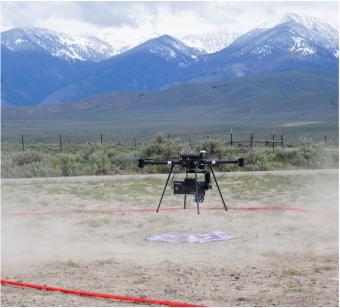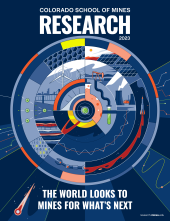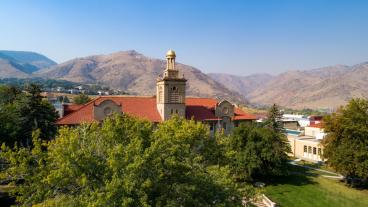Mines researchers working to understand critical materials deposits within Earth's subsurface

Using drones equipped with hyperspectral cameras, scientists can survey potential mineral deposits.

By Ashley Piccone, Special to Mines Research Magazine
A renewable, green future full of electric cars, wind turbines, solar panels and smart technology is on the horizon. But for the sun to rise in this new dawn, these devices must be manufactured. Doing so requires a supply of certain minerals—often rare earth elements—with unique magnetic, catalytic and luminescent properties.
These critical materials are essential but often difficult to obtain. The supply chain issue is twofold: some minerals are rare and hard to find, while others are challenging to mine at a profit. This explains why critical minerals have historically been mined mostly as byproducts.
Thomas Monecke, professor of geology and director of the Center to Advance the Science of Exploration to Reclamation in Mining (CASERM), and Katharina Pfaff, research associate professor of geology and geological engineering, are exploring mineralogy across scales to better understand deposits of critical materials within the subsurface. They aim to develop and implement a workflow to explore for minerals in the most efficient and sustainable way possible.
“We want to figure out which deposits have elevated critical mineral concentrations and how these are distributed within the deposit,” said Monecke. “And, as a scientist, I care about the why. What are the processes that make certain deposits enriched while others are not?"
The team brings together techniques from the micron to kilometer scale. At several sites within the Idaho Cobalt Belt, which may become an important domestic source for cobalt as a battery material, they conducted a drone-based hyperspectral survey of the potential future deposits. In addition, they analyzed the drill core with an X-ray fluorescence core scanner, a device that is entirely unique in North America, to determine the geochemical composition of the ore and waste. Using a state-of-the-art hyperspectral core scanning system, they will also determine the mineralogical composition of the core. Optical and electron scanning microscopes will allow them to examine samples at the smallest scales.
“Generally, we just don’t know that much about critical minerals,” said Pfaff. “This work is helping us understand where they really occur, how we should look for them and how we can assess what is available.”
The end goal of the project is to develop a 3D model of the subsurface. This will require synthesizing the different data sets, a task the researchers are working on with machine learning algorithms and in conjunction with Mines’ Applied Mathematics and Computer Science departments.
“Our project is really broad. It reaches from early exploration, throughout a mine life cycle, all the way to remediation afterwards,” said Pfaff. “We would like to use minerology across scales and our knowledge of the subsurface to predict what mining would look like before diving in."
By truly understanding what minerals are beneath the surface and the processes that created them, Monecke and Pfaff aim to make domestic mining economically feasible while focusing on sustainability and community engagement.



